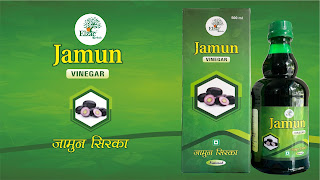🌿 Top Benefits of Starting an Ayurvedic PCD Franchise with Elzac Herbal India India’s Ayurvedic industry is booming — and smart entrepreneurs are looking for low-risk, high-growth opportunities in this sector. One of the most popular and successful business models is the Pcd Franchise . And when it comes to choosing the right company, Elzac Herbal India stands tall with its trusted products, partner-friendly policies, and growing reputation. ✅ 1. Low Investment, High Returns Unlike manufacturing or retail chains, PCD franchises require low startup costs . You don’t need a factory, R&D lab, or big infrastructure. With a small investment, you can start earning profits right from the first month — especially with high-quality, in-demand Ayurvedic products. 🌐 2. Monopoly Rights in Your Area Elzac offers area-wise exclusivity , meaning no other partner will compete with you in your territory. This gives you control, long-term market stability, and full opportunity to build yo...
Jamun, also known as Indian blackberry, is a delicious and nutritious fruit that is native to the Indian subcontinent. In this video, we'll show you how to make a refreshing and flavorful jamun cider that you can enjoy at home.
Ingredients
To make jamun cider, you'll need the following ingredients:
- 2 cups of ripe jamun fruit
- 1/2 cup of sugar (adjust to taste)
- 1/2 teaspoon of cinnamon powder
- 1/2 teaspoon of ginger powder
- 1/4 teaspoon of cardamom powder
- 4 cups of water
- 1/4 teaspoon of wine yeast
Process for making Jamun Cider:
Here are the steps to make jamun cider:
- Wash the jamun fruit and remove the seeds.
- In a large pot, add the water, sugar, cinnamon powder, ginger powder, and cardamom powder. Mix well and bring to a boil.
- Add the jamun fruit to the pot and let it cook for 15-20 minutes on medium heat.
- Turn off the heat and let the mixture cool down to room temperature.
- Once the mixture has cooled, strain it using a fine mesh strainer or cheesecloth to remove any pulp or solids.
- Transfer the strained liquid to a large glass jar or fermenting vessel.
- Add the wine yeast to the jar and mix well.
- Cover the jar with a clean cloth or lid with an airlock.
- Let the mixture ferment for 30-40 days at room temperature or until you see bubbles forming on the surface of the liquid.
- Once the fermentation is complete, strain the mixture again to remove any sediment or yeast.
- Your jamun cider is now ready to be bottled and chilled in the refrigerator.
Conclusion
That's it for this video on how to make jamun cider. We hope you found this recipe easy to follow and that you enjoy making this delicious and healthy beverage at home. Cheers!




Comments
Post a Comment